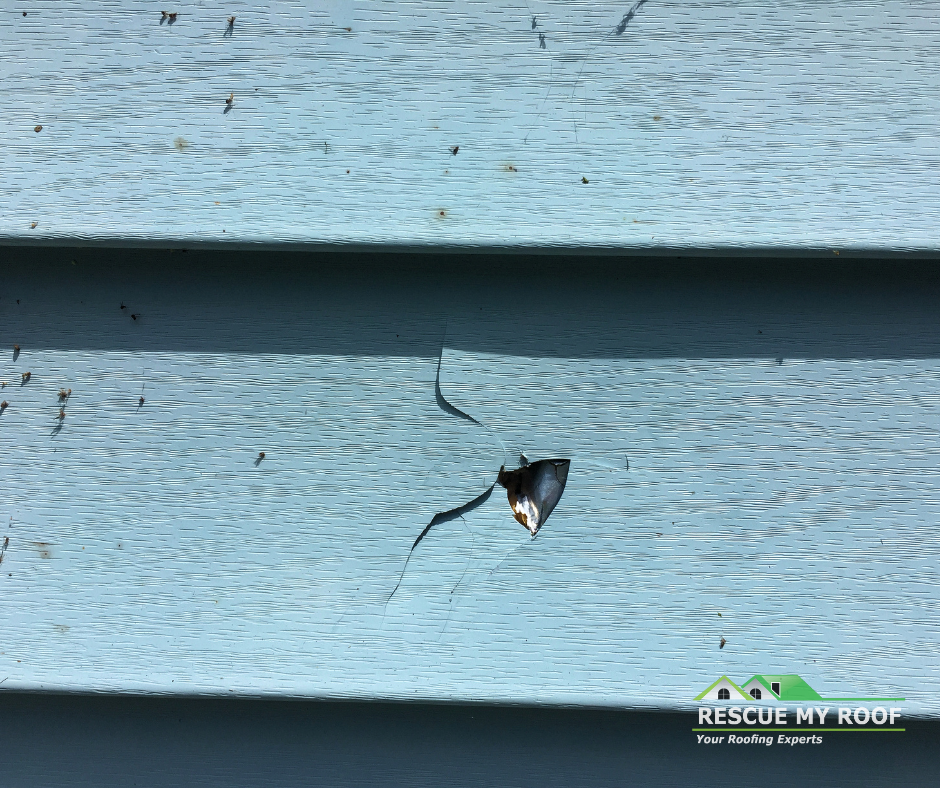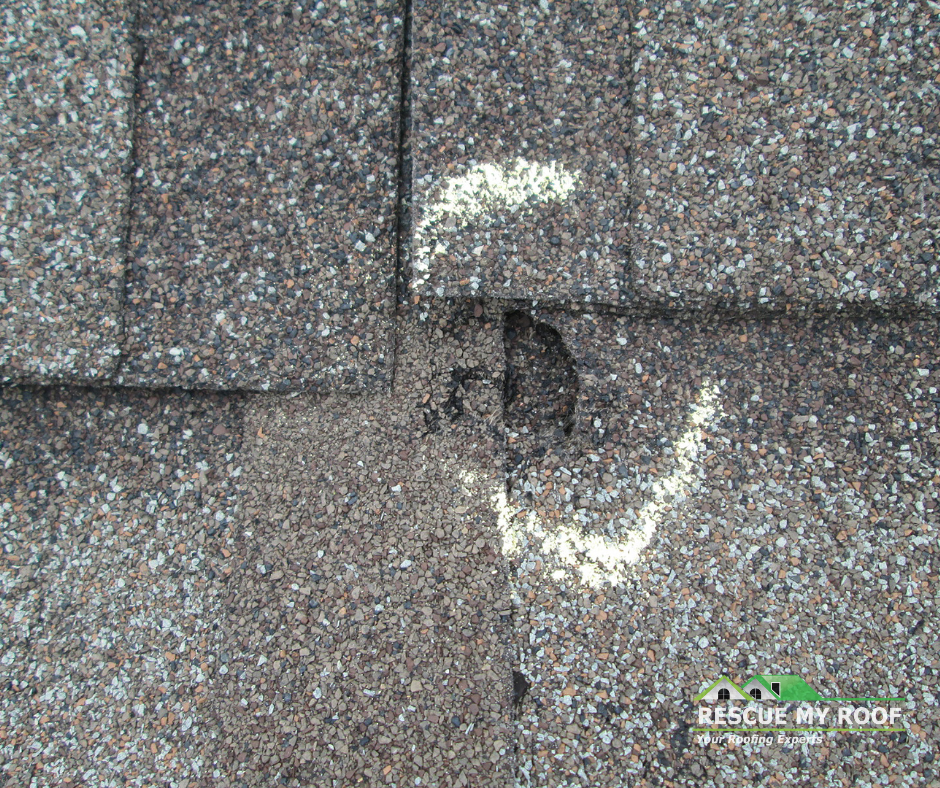What Happens During A Storm Damage Roof Inspection?
You just had a storm blow through your neighborhood. While you don’t know what storm damage looks like, you hear that your neighbors are having problems.
Following trouble, intrusive thoughts always make you wonder if you have storm damage. While you scramble to contact your insurance company first, you’ll also need to find a roofing contractor for a storm damage roof inspection.
But what exactly will the roofing contractor look for on your property? And how will they prove that your roof has storm damage?
Rescue My Roof has helped homeowners with their storm-damaged roofs for over a decade. Now we’ll help you understand what happens when you need a storm damage roof inspection.
In this article, you’ll learn what professional roofers look for, how they document it, and a homeowner’s first steps after the inspection. In the end, you’ll know what to do if your roof is storm-damaged.
What Do Roofing Contractors Look For with Storm Damage?
A storm damage inspection differs from a traditional roof inspection. Contractors look for specific details: hail marks, shingle cracks, and wind damage to the exterior of your home.
Here’s a more in-depth look at what contractors are looking for:
Damage to Ground-Level Objects

Visually inspecting things at the ground level is the first step contractors take. They do this to look for damage around your property.
If there’s wind or hail damage in areas other than your roof, there’s a possibility your roof has damage as well. That’s why contractors thoroughly inspect your home to document the full extent of the damage.
Below is a list of areas to check for hail and wind damage:
- Dents in downspouts
- Strikes, dings, or damage to your garage door
- Wind-pulled or missing siding
- Holes in window screens
- Damage to any painted wood
- Dents in your mailbox
- Shingles on the ground
As you can see, anything around the property is fair game for inspection.
While there is no 100% guarantee that your roof has damage, if there’s damage found on the ground, there’s a good chance you’ll be able to file a claim.
How To Inspect A Roof For Storm Damage
After the inspection at the ground level, it’s time to inspect the roof itself. Inspectors will look for signs of hail, wind, or other storm damage on your gutters, shingles, and more.
Here’s what you can expect:
Dents or Dings To Your Gutters
Your roofing contractor will check your gutters for any signs of damage. They will look for dings or dents to the face of the gutter that could have occurred from a hail strike.
Additionally, they’ll also look for granules in your gutter. Granules make up the surface area of your shingles and help to protect them from leaks.
If the hail did enough damage to warrant granule loss, the integrity of your shingles is compromised, which may require a repair or replacement.
While combined with hail and wind damage, granule loss presents as storm damage; it can also happen with roof age. So you may find loose granules in your gutters if you have an older roof. It may be time for a replacement if you’ve noticed this sign.
Condition Of Your Roof’s Shingles

Inspecting the shingles may seem like the most obvious step to take, but a roofing contractor will have to inspect the condition of your shingles.
For wind damage, they’ll look for any missing, lifted, cracked, or creased shingles. These signs indicate that the shingles have been lifted enough to compromise their integrity and increase the likelihood of leaks.
For hail damage, they look for dings or dents large enough to damage the shingles. They also look for signs of granule loss from continuous hail hits.
If they see any damage, they will document it through photos. The photos will be sent to the insurance company with your claim, proving the roof has been compromised.
Damage to Roof Flashing and Roof Vents
A thorough inspection involves looking at other components of your roof. The most common areas to show signs of storm damage are roof flashing and vents.
Because they are often made of metal, flashing and vents better show signs of hail strikes. Your contractor will look for this and inspect any other roof metal for dents and dings.
If the hail is strong enough to dent the metal, your roof will have damage in other areas.
How Does A Roofing Contractor Document Storm Damage?
The insurance company needs clear evidence of storm damage to file a substantial insurance claim. A Roofing contractor will document damage by taking images throughout the inspection.
Images should include ground-level damage, any areas with missing shingles, granule loss, hail marks, and anything else that looks like potential storm damage.
Contractors mark up the areas on the roof, allowing the insurance to see the extent of the damage. These photos will be submitted to the insurance company to prove you have a claim.
Marking up the areas on the roof allows the insurance to see the extent of the damage. All of these photos will be submitted to the insurance company to prove you have a claim.
Homeowners can also take their own photos, but it’s not necessary. So if you’re looking for a storm damage inspection, the only step for a homeowner to take is to find a contractor and begin the insurance claim.
What Happens After Your Storm Damage Roof Inspection?
After the inspection is complete, the roofing contractor will walk through the damage with you and recommend whether or not you file an insurance claim.
If they don’t find storm damage, they can help you determine the following steps to address your issues.
If they find storm damage, they’ll share the damage photos with you and recommend you call your homeowner’s insurance.
Roofing contractors are only as involved as the insurance company demands, so it’s the homeowner’s responsibility to initiate a homeowner’s insurance claim. Make sure you follow through and give your insurance a call if storm damage is found.
After that, it’s in the hands of your insurance company to approve or deny your claim. While your contractor can advocate for you, they have no power to approve your claim.
Filing A Storm Damage Claim
Now you know what’s inspected during a storm damage roof inspection, how contractors document it, and what happens after the inspection. If you don’t have storm damage, no claim will be filed.
But if an inspector finds storm damage, you’ll have to start the process of filing an insurance claim.
Filing a claim can be confusing, so you’ll want to know as much as possible before diving in. Rescue My Roof is here to help.
Rescue My Roof has provided insurance claim assistance to happy homeowners throughout Southeastern Wisconsin. We’re here to guide you through a stressful process and give you the roof you deserve.
You can learn more about homeowners insurance with “Is Your Roof Damage Covered by Insurance?”
Are you worried your roof has storm damage? Allow us to help. Contact us today to get a free storm damage estimate.


